Spring Gardening
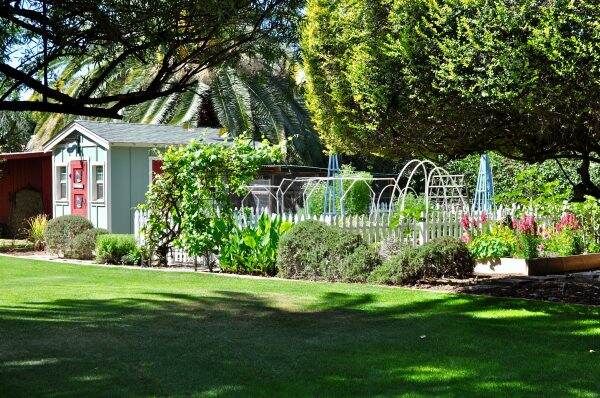
I often get asked if gardening takes a lot of my time. Overall, the answer is no. Yet there are times during the year where crops need changing, soil needs amending, trees require pruning, and flowerbeds need thinning and weeding. Now is the time to do the Spring Gardening here in Phoenix.
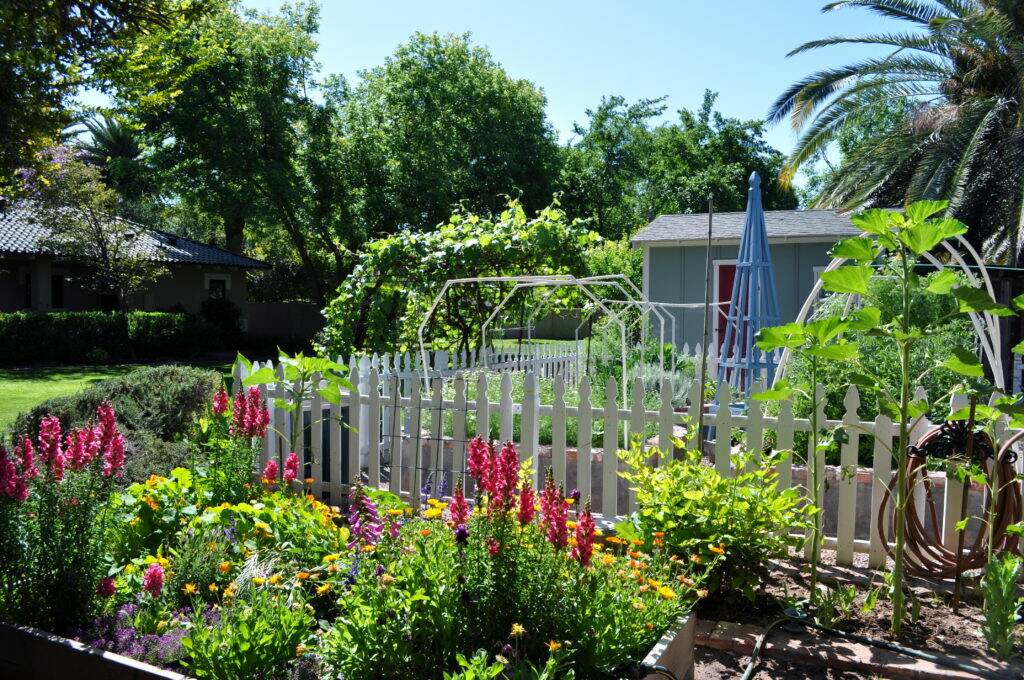
Fortunately, we have someone to help us maintain our 2+acres. However, he has been out sick for the last 6 weeks. My husband and I are enjoying the extensive yard work in the interim as it is giving us a chance to evaluate and improve our outdoor area.
The Orchard
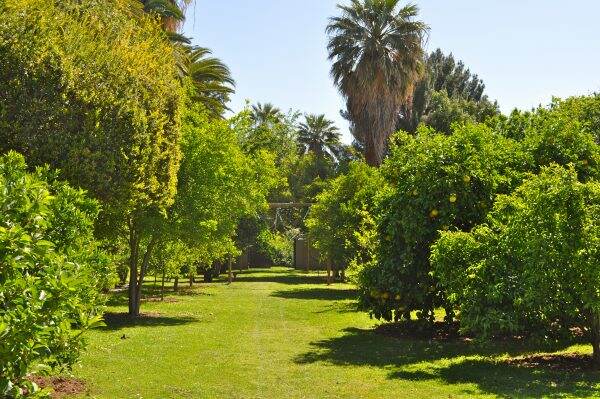
Our orchard has primarily citrus trees, planted long before we purchased the home. From oranges to kumquats, we love being able to pick fresh fruit many months of the year.
Timing is everything when you fertilize your citrus trees. Generally, you should fertilize your citrus tree at least once every two to three months during your tree’s dormant periods of fall and winter. Then once every one to two months during the tree’s active growth of spring and summer.
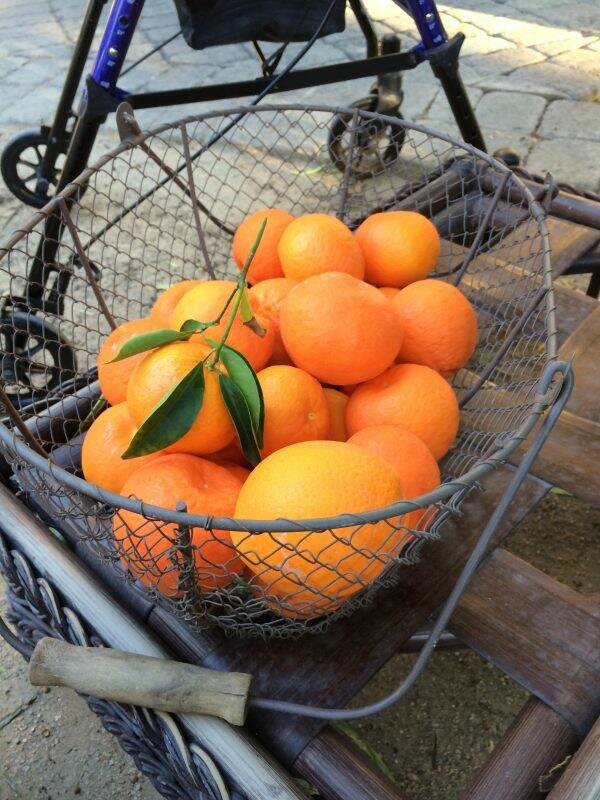
Therefore it is time to fertilize citrus trees now. President’s Day is my cue to remember, then Mother’s Day and Labor Day.
What Kind of Fertilizer
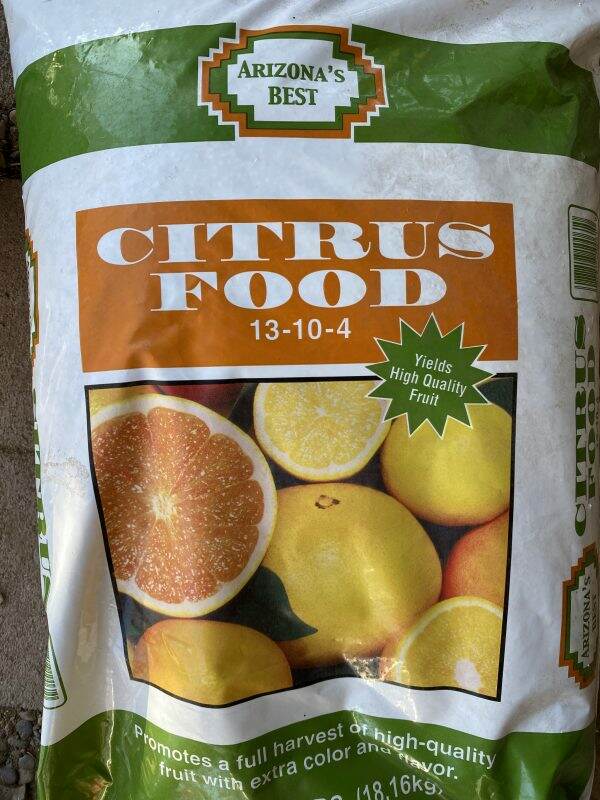
NPK is the abbreviation you find on any fertilizer bag. It stands for nitrogen, phosphorous and potassium (K is the chemical symbol for potassium). Nitrogen encourages green growth, phosphorus encourages strong roots for flowers and fruit, and potassium encourages healthy fruit size, shape, color and flavor. Fruit trees need a balanced ratio of all three to support the growth of sturdy roots, strong branches and large, juicy fruits. Consider slow-release fertilizer as too much nitrogen at once isn’t recommended.
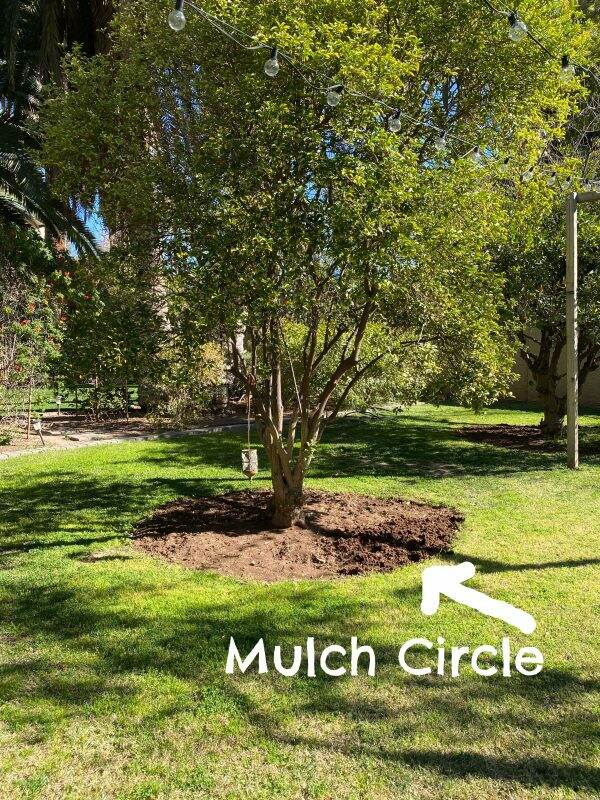
Fertilizer works best when applied to a mulch circle around the tree. Mulch circles keep grass from competing with the tree for water and food. They also prevent damage from lawn mowing, and help keep the root zone cool and moist.
Slowly we are working our way through each tree to create a large clean mulch circle around every one. In addition, all dead branches are being trimmed from the citrus trees. Soon we’ll have gleaned all the fruit, leaving room for fragrant blossoms to appear in next year’s crop.
To give you an idea of how many fruit trees we have: 4 Grapefruit, 8 Oranges 2 Lime, 1 Lemon, 1 Kumquat, 1 Limequat, 2 Tangerine, 1 Apple, 2 Apricot, 1 Peach, 1 Fig. That’s a lot of mulch circles!!
The Garden
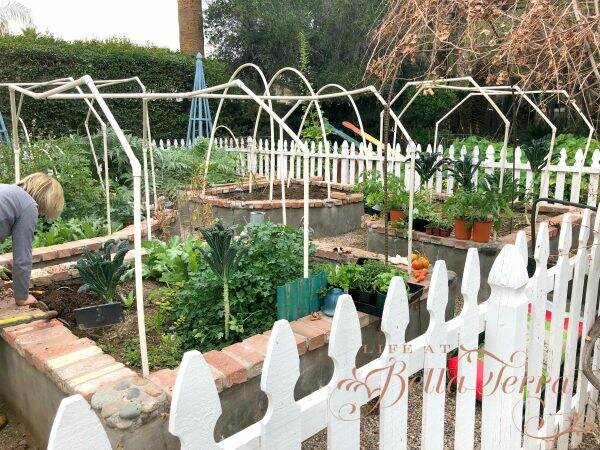
As returning visitors to my Spring Gardening updates may know, there are 5 raised bed planters in my vegetable garden within a white picket fence: 1 raised flower planter and numerous surrounding beds at ground level.
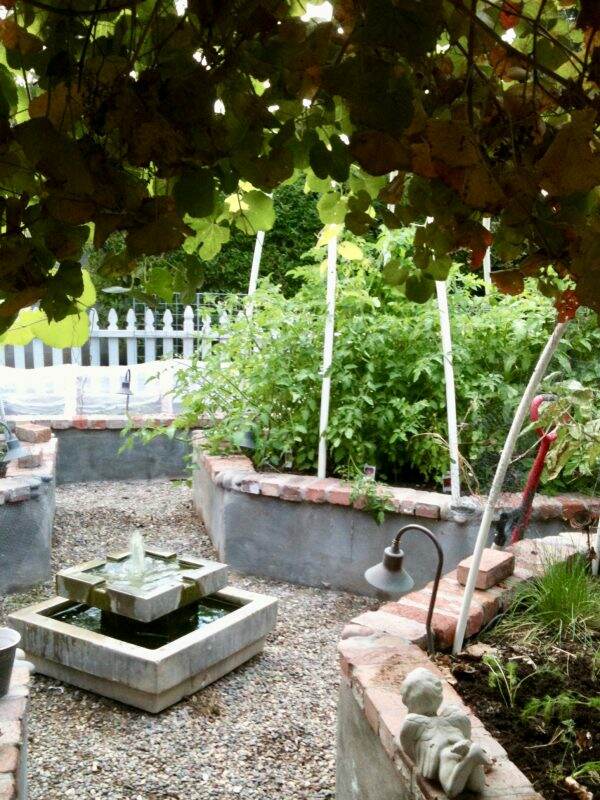
With the winter garden reaching its prime, it is time for me to plant our Spring selection. First, I clean out all the dead/dying plants.
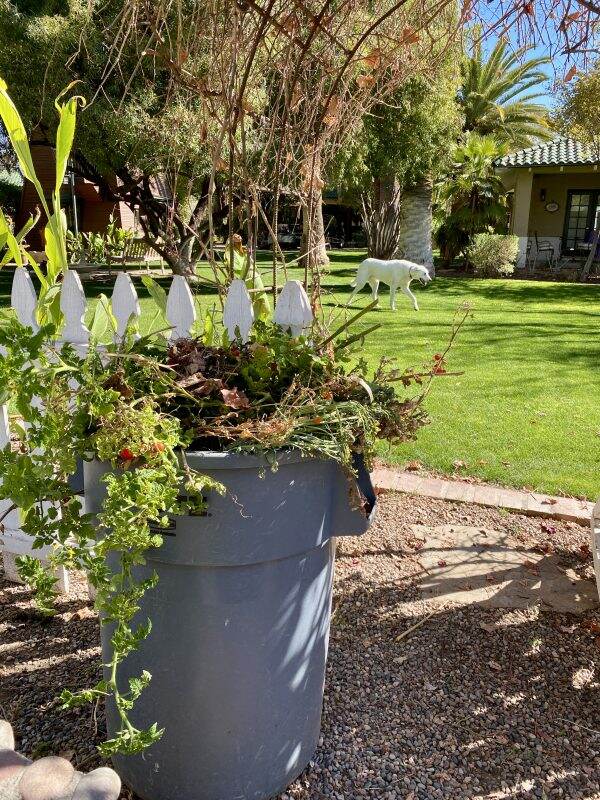
Next I add fresh compost. I am a huge fan of composting because it is easy, reduces your waste by 30%, and the plants love it.
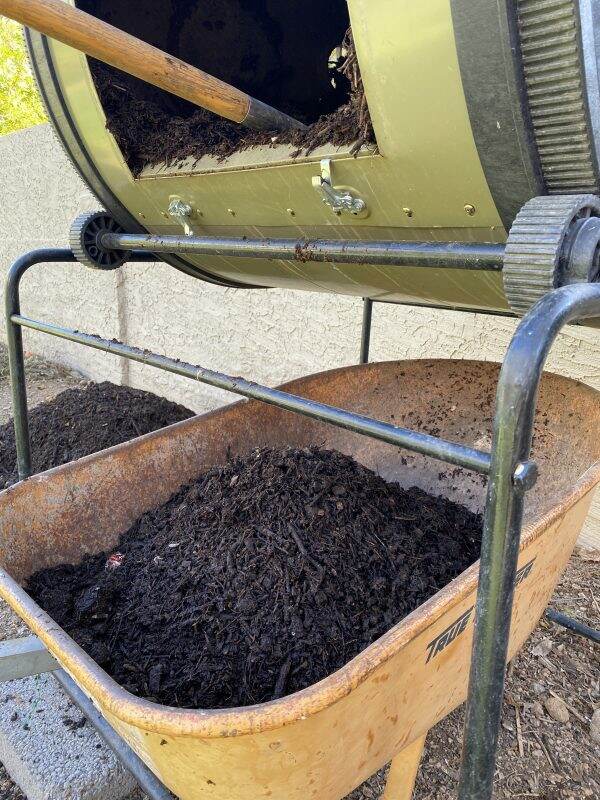
To see a previous post on Composting 101, click here.

For my garden, I prefer compost that is basically clean; no small sticks or other dry debris. I sift the soil loosely over a wheel barrow before I transport it to the garden.
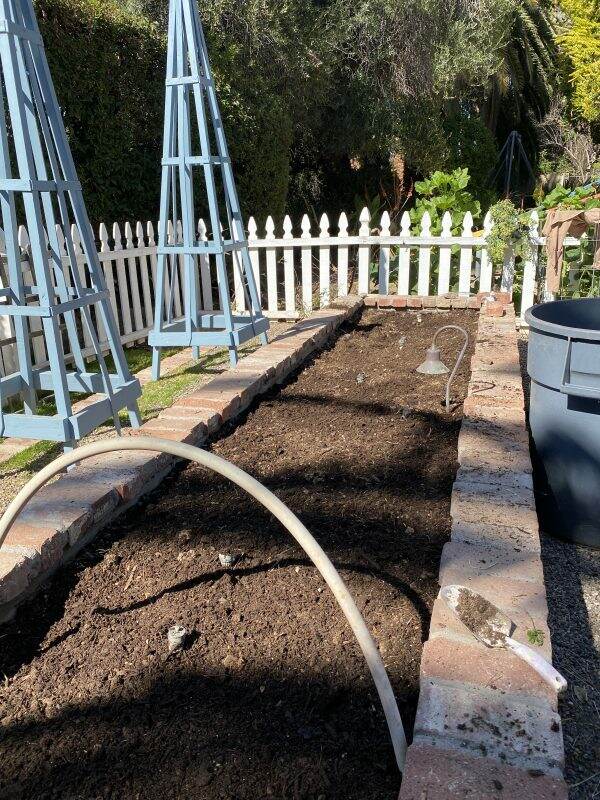
Here I let it sit in the beds for a few days or several weeks, depending on what I am planting. Currently I am awaiting a shipment of strawberry plants so the bed is ready to go!
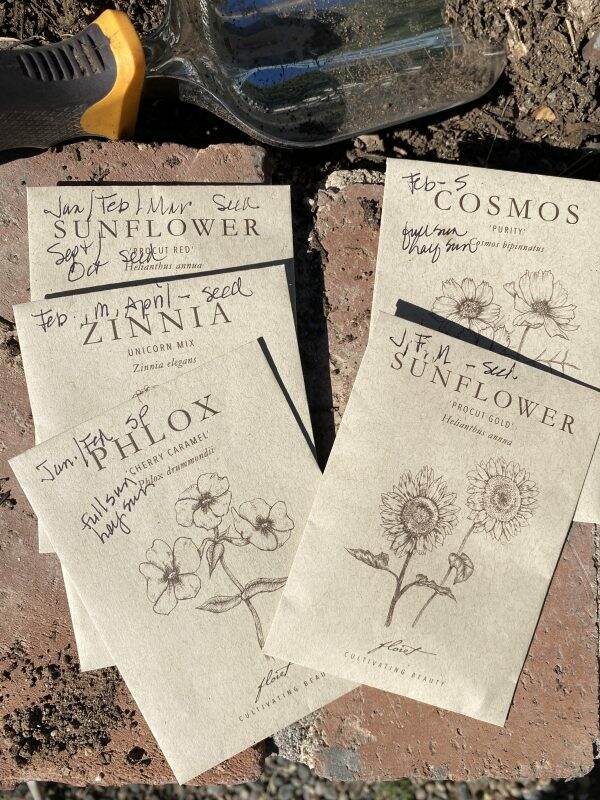
Since I buy so many flowers, I decide to have a cutting garden this year. I ordered seeds willy nilly from Floret Farm, not taking the time to determine if they work for our planting zone (9B for USDA charts). What was I thinking?
For some reason I make the assumption that all flower seeds are planted in the Spring, which, is not the case here in Phoenix. With 10 packets of flowers seeds, only 5 are able to be planted now. The balance will have to wait until fall.
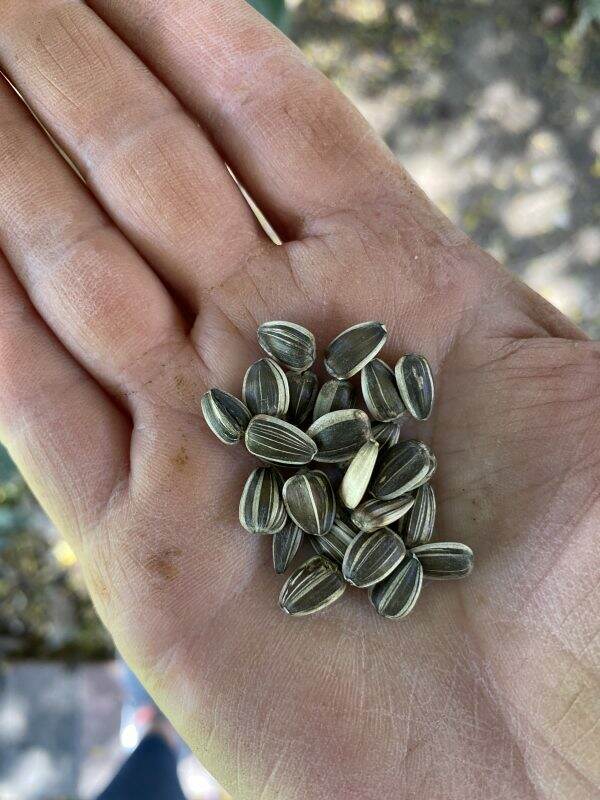
Using jumbo craft sticks, I mark the location with the name of the flower, planting date and # of gestation days. Since the sun patterns will change in the next few months, I will be interesting to see how they do in this location.
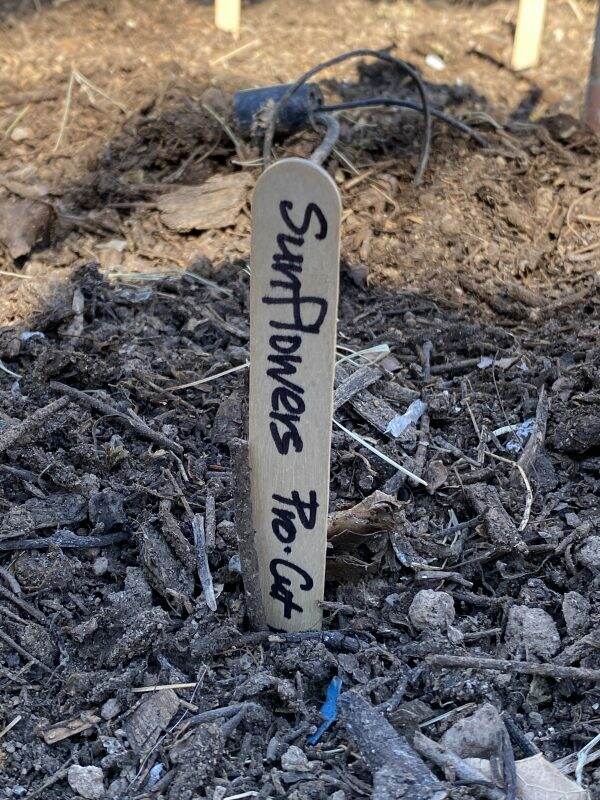
Some of the winter vegetables are looking so good and healthy, there is no need to remove them just yet. It is very rewarding to head to the garden just before dinner and pick ingredients for a fresh salad. Most of my tomato plants survived the winter so I will keep those too.
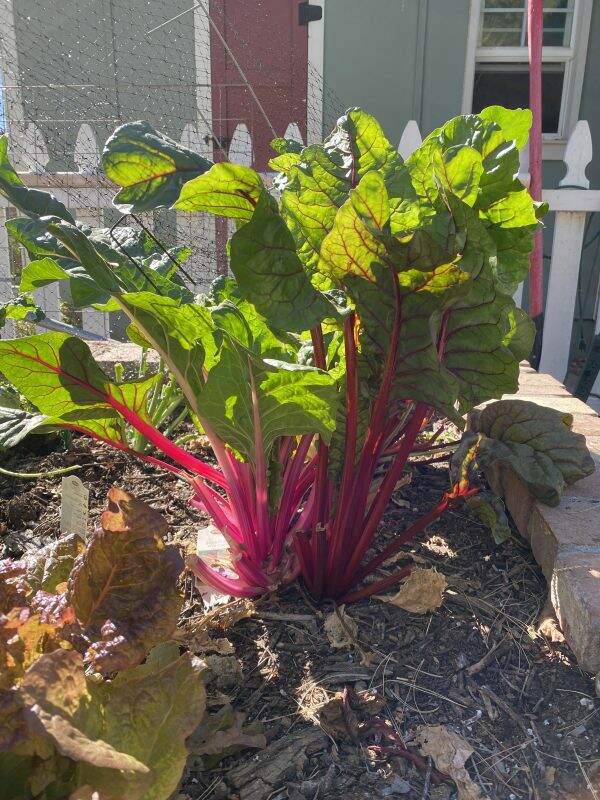
If you live in this area, my go-to bible for gardening is the Planting Guide for the Valley of the Sun by Kevin E. Erdmann (2004). I finally found the link online for the Bedding Planting Guide and here it is. However, if you are interested in the Vegetable and Herb Planting guide, contact me at [email protected] and I can scan it and email it to you.

What I love about this planting guide is that it tells you when to plant by month, whether to plant seeds or starters, if they are annuals or perennials and when they bloom. For a complete list of what you can plant this Spring, see last year’s post here.
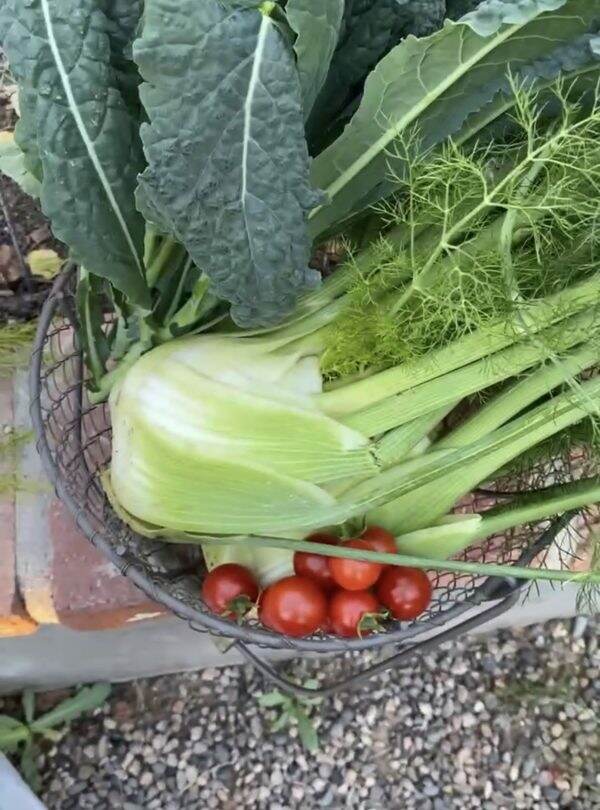
The gardening activity will continue as I make my plant selection so more to come on that! Keeping my fingers crossed that the frost is over, as it was 37 degrees yesterday.
Being out in the fresh air and sunshine is just heavenly. The only drawback to gardening is that I am so sore! Time to use those muscle relaxing bath salts I made over the holidays. See recipe here.
Happy Wednesday!

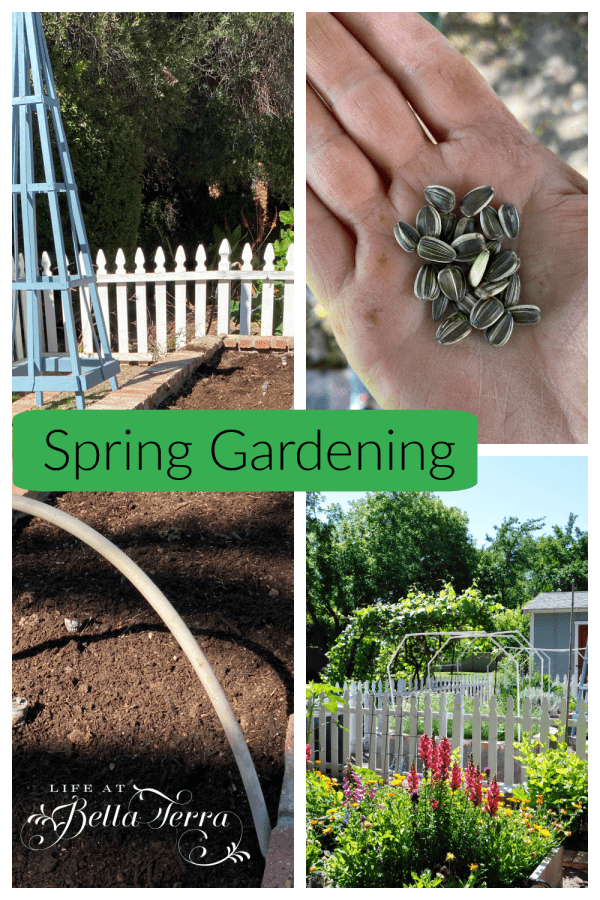
Just a reminder that any words that are italicized bring you to the source. If it is a product on Amazon, please note that I am an Amazon Affiliate. If you purchase something through my website, I receive a small (very small!) stipend, which doesn’t affect the price you pay at all. My goal is to make sourcing the items easy for you. Thank you for your continued support.
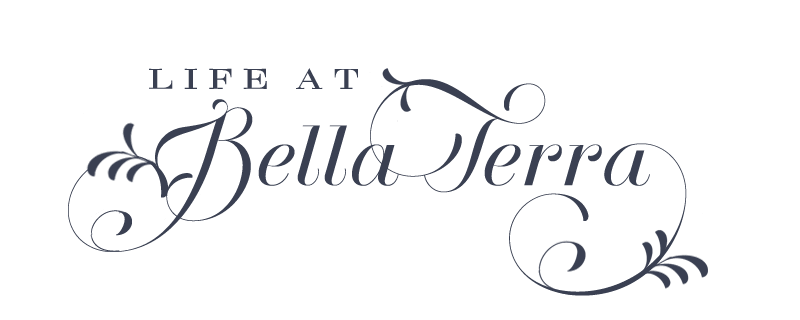
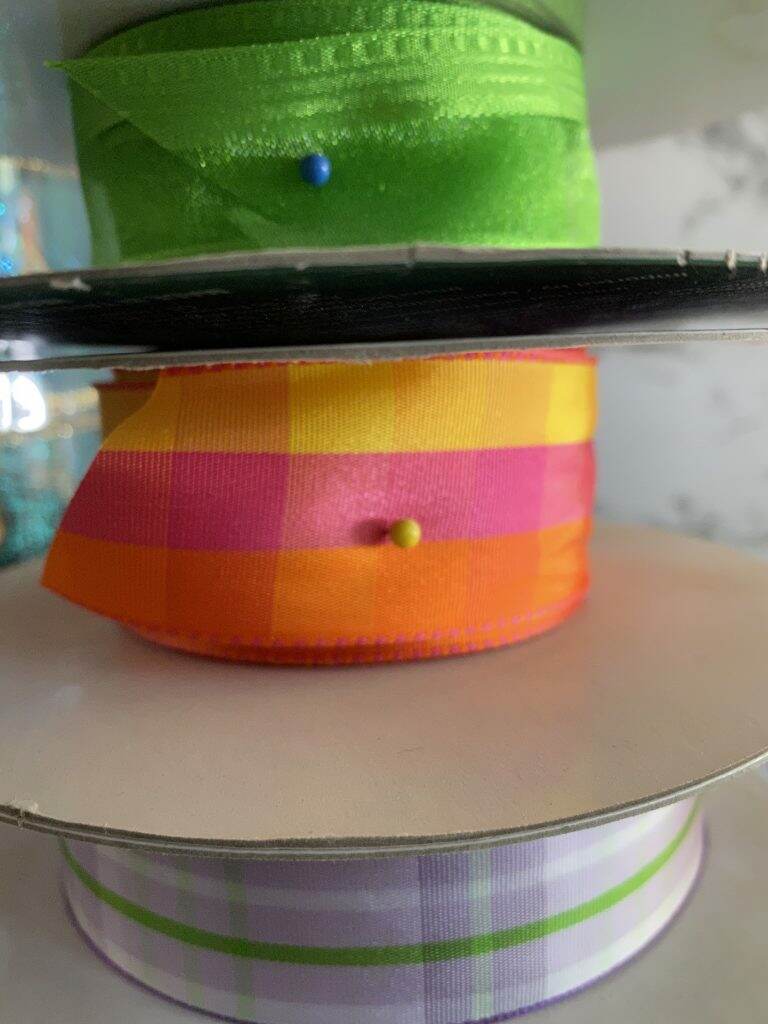

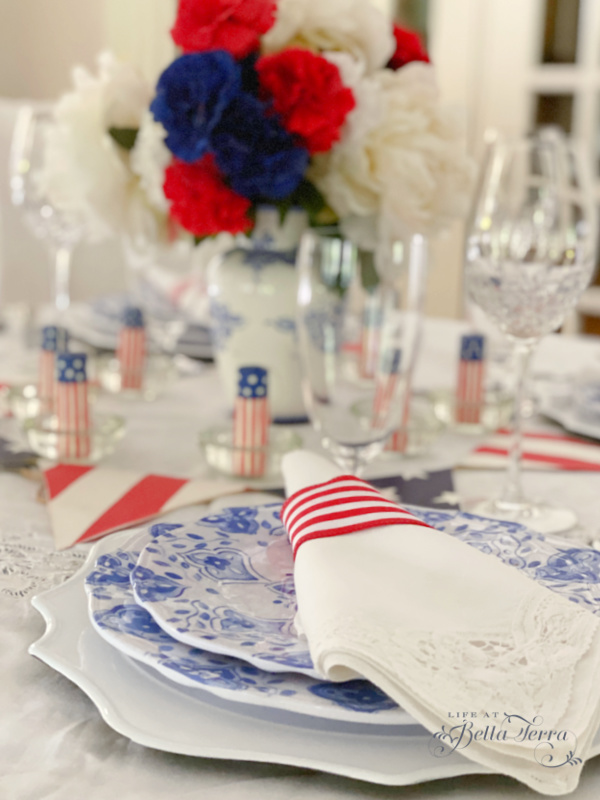



MojoHeadz records https://open.spotify.com/album/4CzAncPgZU6MFAsLB9124v MOJOHEADZ records, is a hard core music company that is set to make its mark on the world of dance music on its own terms.Check this reviews…
Dear Mary,
I have had the privilege of your friendship for many years.
Your expertise in the garden goes beyond knowledge…. I love how your love creates this secret garden in the middle of our urban sprawl. It’s time to write the book! Or the Netflix series! Your instinct, curiosity and sense of adventure always aspire me to find magic in my home and garden.
Thank you for sharing so generously your home and family
You have such a stunning garden. I can’t wait to get my hands in the dirt again. I still have to wait a bit as we still get frosts. I started my flower seeds in the basement a month ago, so they should have a wonderful start .
Blessings to you.
I am hoping my flower seeds sprout. I just placed them in the ground which is suggested by my planting guide. Time will tell!
I love that you have a garden almost year around Mary! I’m hungry now and need to go make a snack 😉
Hugs friend.
I really enjoyed this post. I’m inspired by gardening and wish we had the space, however it’s fun hearing about what goes into planning and preparation to be able to enjoy the harvest. There’s something very therapeutic about being outside and getting our hands dirty and feeling satisfaction from watching things grow. I miss the days when we had a garden. Thank you for sharing this lovely post!
Melody, Thank you for your sweet comments. There is something about getting your hands in the dirt that is rewarding and calming. That’s why my hands always look so…..hmmm, rough? Perhaps there is room for a container garden in your new beautiful home??
I love your “little” self-contained orchard. Best fruits are those picked right from the tree and eaten on the spot!! I have never seen/heard of a limequat! Growing up, we had kumquats that were yummy — thinking that that flavor along with lime might be an interesting mix. I do remember taking a spoon out back for eating kumquats under the giant avocado tree we had. (Thanks for that memory!! Somehow it’s been rattling around in my overtaxed brain all these years just waiting for a jolt to bring it forefront!
Tanya, I wish I could grow avocados. My neighbor had a huge avocado tree when I lived in California. Last night, after a significant pruning of the limequat tree, I took the fruit, squeezed it and made a margarita. It is an interesting flavor..sort of a combination of orange, lime, and kumquat. Really tasty! Thanks for sharing the fun memory. I can see you sitting there under that tree!